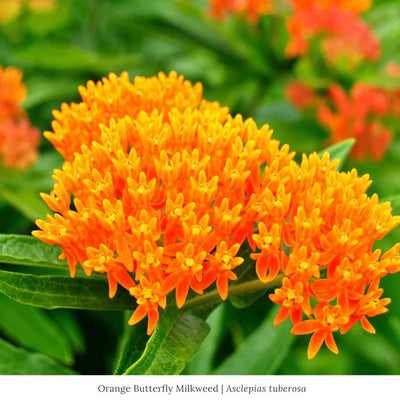
The Fascinating Relationship Between Asclepias Plants and Aphids: A Harmony of Nature
Nature is a complex web of interactions, where every living organism has a role to play. One of the intriguing relationships that exemplify this intricate dance is the connection between Asclepias plants and aphids. While many might raise an eyebrow at the idea of aphids being associated with any positive aspect of plant life, the reality is quite different. Asclepias plants and aphids share a unique and mutually beneficial relationship that highlights the intricacies of the natural world.
The Allure of Asclepias Plants
Asclepias, commonly known as milkweed, is a genus of plants that encompasses over 100 species. These vibrant and eye-catching plants are a vital component of ecosystems across North America. They are renowned for their stunning clusters of flowers, which come in various hues of pink, orange, and purple. Their appeal, however, extends beyond their aesthetic beauty.
Aphids' Attraction to Asclepias
Aphids are small, sap-sucking insects that are notorious for their ability to infest and damage plants. However, in the case of Asclepias plants, these seemingly harmful insects play a different role. Asclepias plants are hosts to a unique and specialized relationship with aphids, primarily due to the sap-like substance they produce known as latex.
Latex: The Key Player
Latex is a milky fluid produced by Asclepias plants, and it contains toxic compounds that serve as a defense mechanism against herbivores. This latex is essential for the survival of the plant, as it acts as a deterrent to grazing animals. However, some creatures have managed to adapt and even thrive in the presence of this toxic substance – enter aphids.
The Aphid's Strategy
Aphids that are attracted to Asclepias plants have evolved to metabolize the toxic compounds found in the latex. They possess unique enzymes that break down these toxins, rendering them harmless to the aphids themselves. In return for this detoxification service, aphids gain a stable and relatively safe food source. The latex, though harmful to many other herbivores, becomes a nourishing sap for these specially adapted aphids.
Aphids as a Food Source for Beneficial Insects
The story of the Asclepias-aphid relationship doesn't end with the aphids' adaptation. The presence of aphids on milkweed plants also draws in a host of beneficial insects. Ladybugs and lacewings, for instance, are attracted to aphid colonies as a convenient and abundant food source. This influx of beneficial insects can aid in controlling aphid populations and contribute to a balanced ecosystem.
The connection between Asclepias plants and aphids is a remarkable example of nature's ability to find harmony in unexpected places. What might appear as a parasitic relationship at first glance is actually a delicate balance that showcases the intricacies of adaptation and ecological interdependence. Asclepias plants benefit from the detoxification service provided by aphids, while aphids capitalize on a food source that is toxic to many other creatures. Additionally, this interaction indirectly benefits other insects higher up the food chain.
Understanding these kinds of relationships not only deepens our appreciation for the natural world but also underscores the importance of maintaining biodiversity and the delicate balance of ecosystems. As we continue to unravel the mysteries of these interactions, we gain insights that can inform our conservation efforts and ensure the preservation of these incredible connections for generations to come.


